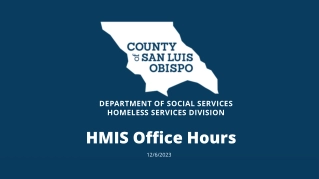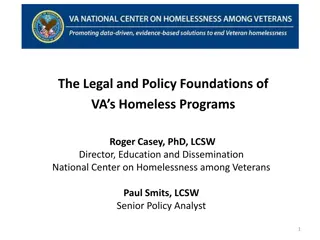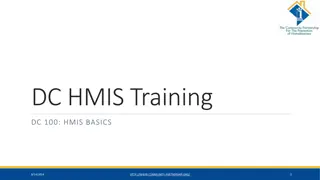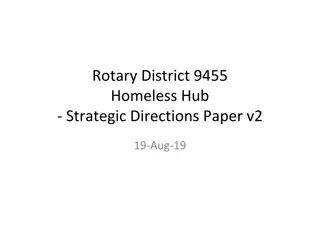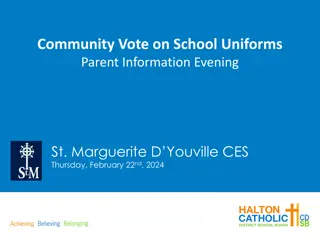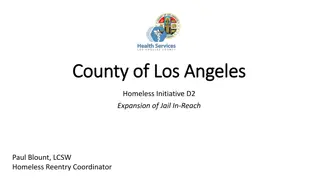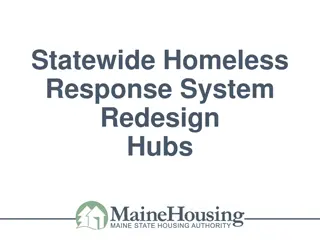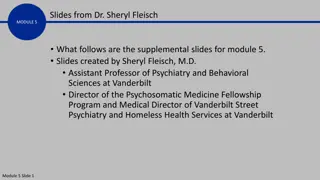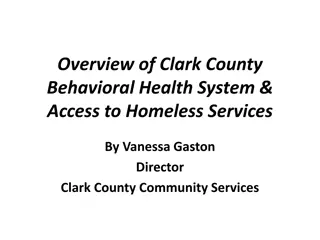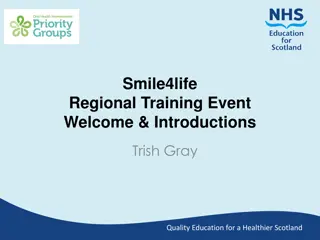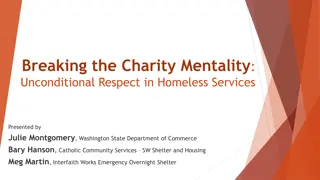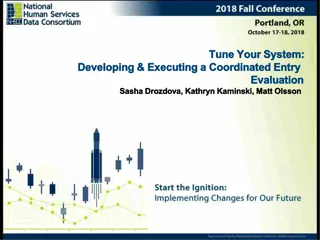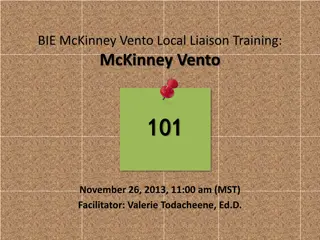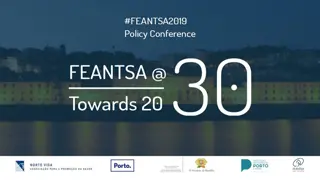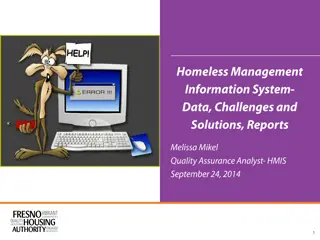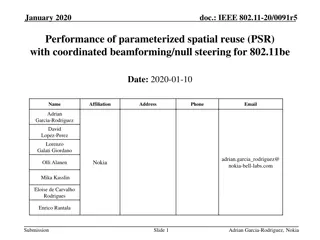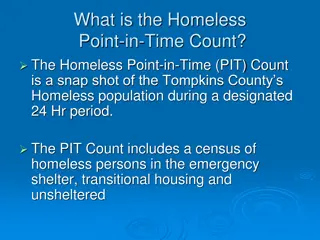Understanding Coordinated Entry System (CES) in Homeless Services
Coordinated Entry is a strategic approach focusing on housing and service coordination to link individuals experiencing homelessness to appropriate resources. With a primary goal of quick identification and prevention of homelessness, the system assesses consumer needs and connects them to housing and services efficiently, prioritizing those with higher vulnerability. San Diego's CES emphasizes Housing First, Harm Reduction, and Trauma-Informed Care. Expectations from CES include client choice in referrals and matching clients to suitable housing resources. The Coordinated Entry workflow involves enrollment, assessments, referrals, tracking, and program exit to ensure effective support for homeless individuals.
Download Presentation

Please find below an Image/Link to download the presentation.
The content on the website is provided AS IS for your information and personal use only. It may not be sold, licensed, or shared on other websites without obtaining consent from the author. Download presentation by click this link. If you encounter any issues during the download, it is possible that the publisher has removed the file from their server.
E N D
Presentation Transcript
CES Prioritization Tool July 2021
What is Coordinated Entry? What is it? A strategy that focuses on housing and service coordination to link those experiencing homelessness to the most appropriate housing resource to meet that individuals need. What is its Purpose? To quickly identify homeless people, to prevent homelessness whenever possible, to appropriately assess the needs of consumers that request help, and to connect them to housing and services quickly. What must it do? The Coordinated Entry process must, to the maximum extent feasible, ensure that people with more severe needs and levels of vulnerability are prioritized for housing and homeless assistance before those with less severe service needs and lower levels of vulnerability. HUD CE Notice CPD-17-01
What is the focus of San Diegos CE System? Coordinated Entry for the San Diego COC focuses on three core concepts Housing First Move individuals into housing FIRST and provide additional support to promote stabilization Harm Reduction Reduce and minimize behaviors and consequences associated with drug and alcohol use. Trauma informed Care Understand, recognize, and respond to the effects of all types of trauma.
What can be expected from CES? When a permanent housing resource becomes available, CES will identify the next eligible households on the Community Queue based on CES community prioritization criteria and make a 1:1 referral for that opening based on: program eligibility Client choice: CES emphasizes client choice in all referrals. When no specific preference is indicated, clients are referred to the most restrictive or most abundant housing resource that they are eligible for. For example, a Veteran eligible for Veterans Affairs Supportive Housing (VASH) most likely would be matched to that program, rather than one utilizing CoC funding. Appropriate / Best match: Client reported experience aligns with
Coordinated Entry Workflow Overview 1 2 3 4 5 6 7 8 Your Service Provider Workflow Enrollment into Coordinated Entry program Complete a Current Living Situation Assessment Complete a Vulnerability Assessment Complete the CES Assessment Referral to the Community Queue and Check In Tracking CE Events through a program service Exit from Coordinated Entry program This 4.20 Coordinated Entry Event such as: (Access, Assessments, Prioritization, Referrals, and Placements) will result in a client being visible on the Community Queue. The 3.11 Project Exit Date should be the date that the client is housed. All clients that are entered into Coordinated Entry should already be enrolled in a program in HMIS. 3.10 Project Start Date should be the date that you started working with the client towards attaining housing. 4.12 Current Living Situation is required to be collected at every contact for Coordinated Entry programs. This 4.19 Coordinated Entry Assessment informs prioritization from the Community Queue. This 4.19 Coordinated Entry Assessment informs whether a client is on the Community Queue. Some 4.20 Coordinated Entry Events such as: (Access, Assessments, Prioritization, Referrals, and Placements) will need to be recorded through a program service.
San Diego CoC Prioritization Policy Upon completion of the CES workflow, households enrolled in SD CES are prioritized based on a number of vulnerability factors established by the San Diego CoC through the use of a community prioritization tool. This prioritization process helps to ensure that the region s limited housing resources are reaching households with the greatest vulnerability in a timely and consistent manner. San Diego CES prioritizes households by: 1. The longest history of experiencing homelessness and most needs. 2. The longest history of experiencing homelessness 3. The most needs, particularly mental illness or substance use disorder 4. All other: Non-Chronically homeless individuals, youth and families
Prioritization Tool in Action The prioritization tool is used for identifying clients for case conferencing It is also used as the assessment of the current BNL To ensure that composite scores are reflective of data according to community standards
What is Case Conferencing? Case conferencing is a targeted discussion where homeless response providers including street outreach, CES, and housing providers, work together in meeting the needs of the most vulnerable households experiencing homelessness across the San Diego CoC geographic region. These households are identified by the CES team from the prioritized Community Queue (CQ).
Case Conferencing Structure - By Name Lists of the top 50-100 individuals for each specific sub population (Youth, Veterans, DV, Singles and Families) are pulled at least twice monthly to prepare for upcoming Case Conferencing Top 25 of prioritized clients are selected from those specific BNL s to be discussed Case Conferencing schedule for specific populations can vary between as needed, bi weekly, or monthly Case Conferencing, depending on flow, can last anywhere from 1-2 hours Client Care Teams (who is currently assigned in HMIS or who has most recently worked with the client) are invited to case conferencing. This can include case managers, housing navigators, outreach, housing providers, etc. Stay tuned as case conferencing is projected to re launch in the coming weeks. - - - - -
What are the Goals of Case Conferencing? 1. To ensure coordination and assistance across providers for all those experiencing homelessness. 2. Client reviews that are housing focused and include intentional steps towards progress and evaluate barriers related to housing goals. 3. Strategize solutions as a community to identify client centered housing strategies that are equitable, rooted in housing first, and promote stability. 4. Become more streamlined as a continuum by reducing duplication of services for the clients we serve.


